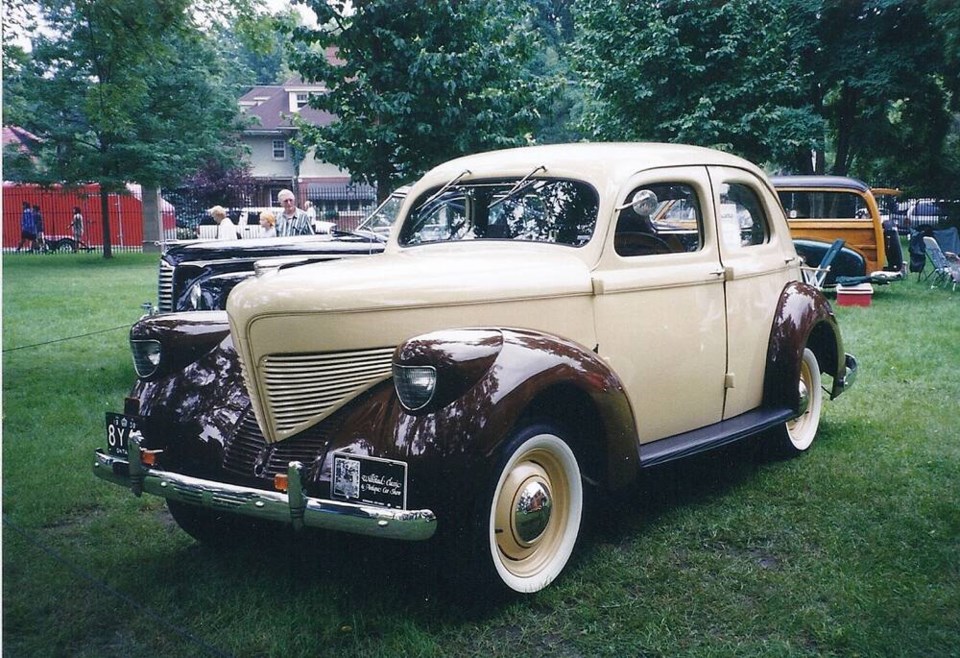John North Willys was a prosperous Overland dealer in Elmira, New York in the early 1900s, but when his flow of Overlands stopped arriving from the factory in 1907 Willys boarded the train for Indianapolis to investigate. He found a closed plant, a moribund company and enough parts to build three cars.
Ever the entrepreneur, Willys set to work. He soothed company directors, calmed jittery creditors and managed to avoid bankruptcy. Appointed company president and general manager in 1908, he erected a huge circus tent as a temporary assembly hall. Within a year Overland produced 465 cars.
Production rose to 4,860 in 1909, then 15,598 in 1910. In 1911 Willys moved the enterprise, renamed Willys-Overland Co., to the ex-Pope-Toledo factory in Toledo, Ohio.
In search of a quieter car, Willys adopted the sleeve-valve engine Invented by Charles Yale Knight of Chicago. W-O introduced it in the 1914 Willys-Knight, the first car bearing the Willys name, and would become the largest user of sleeve-valve engines, doing more to popularize it than any other manufacturer.
Although Willys became closely associated with sleeve-valves it continued conventional poppet-valves on other Willys and Overland models. By 1919 Willys-Overland was among the top five American car manufacturers.
But trouble was brewing. John Willys, much like GM founder Billy Durant, was more visionary than administrator. A large unwieldy organization, model proliferation and the 1920 recession put W-O $30 million in debt.
To salvage it, the creditors brought in Walter Chrysler, recently resigned general manager of Buick. The no-nonsense Chrysler slimmed W-O down, including cutting Mr. Willys’s salary in half, and turned it around.
Shortly after, he did the same for the Maxwell Motor Corp., but this time he more ambitiously converted it into the Chrysler Corp. in 1925.
Through his Willys Corp. holding company and some skilful stock manipulation, John Willys regained control of W-O and resumed his grandiose ways. He bought upscale Stearns-Knight and introduced the popular priced Whippet in 1926 to compete with Ford and Chevrolet.
The Whippet, first with four-cylinders, then six, was so successful that by 1928 sales were up to 310,000, behind only Ford and Chevrolet. W-O dropped the Whippet in 1931 to concentrate on larger six and eight cylinder cars, a questionable strategy in poor economic times.
The Depression took its toll. In 1933 W-O brought back the four cylinder to go with its sixes and eights. By 1934 they were down to fours only, trying to survive with small economical cars.
John Willys, who had sold his stock and gone to Poland in 1930 as president Hoover’s ambassador, hurried home in 1932 to rescue the company. By 1933, although operating under receivership, it introduced a new model 77 with unusual slanted headlamps.
The strain was too much for John Willys who died in August, 1935, at age 61. Although its founder was gone, the company continued to gain strength, and aided by a $3.5 million injection of capital, introduced the all new 1937 model 37 to replace the 77.
The 37 was longer, roomier and better riding than the 77. Its pert, rounded nose, fender-mounted headlamps and smooth, flowing lines cut a dashing figure. Instead of chrome, the attractive grille was comprised of cleverly arranged louvers.
W-O called it the “Surprise Car of the Year” and the public agreed, buying 63,467 model 37s, putting Willys in the black for the first time in eight years. It became the Model 38 in 1938, and Willys 48 in 1939.
Under new president Joseph Frazer (later of Kaiser-Frazer), in 1940 W-O went to a single restyled model Willys 4-40, later called Americar, with a low handsome chromed grille and headlamps faired into the fenders. The Second World War ended civilian car production in 1942.
This would certainly have been the end of Willys-Overland except for a lucky break from the U.S. Army. Seeking an all-purpose four-wheel drive 1/4-ton utility vehicle, ultimately called the Jeep, the Army invited prototypes with a short 49 day deadline. American Bantam was the only company meeting the time limit but its production capacity was too limited for the number required. Although missing the deadline W-O was ready.
Willys stepped in, but even it’s production capacity was too limited so along with Ford under licence they built close to 600,000 Jeeps for Second World War Allied forces.
The arrival of peace in 1945 left Willys with no suitable cars and a small military vehicle. Based on the Jeep’s outstanding military reputation and reservoir of goodwill Willys decided to offer a peace-time version called the Civilian Jeep (CJ).
Willys-Overland was bought by Kaiser Corp, in 1953, renamed Willys Motors, Inc., and then by American Motors in 1970. Jeep later became part of Fiat Chrysler Automobiles, and more recently Stellantis when FCA amalgamated with Peugeot PSA.



